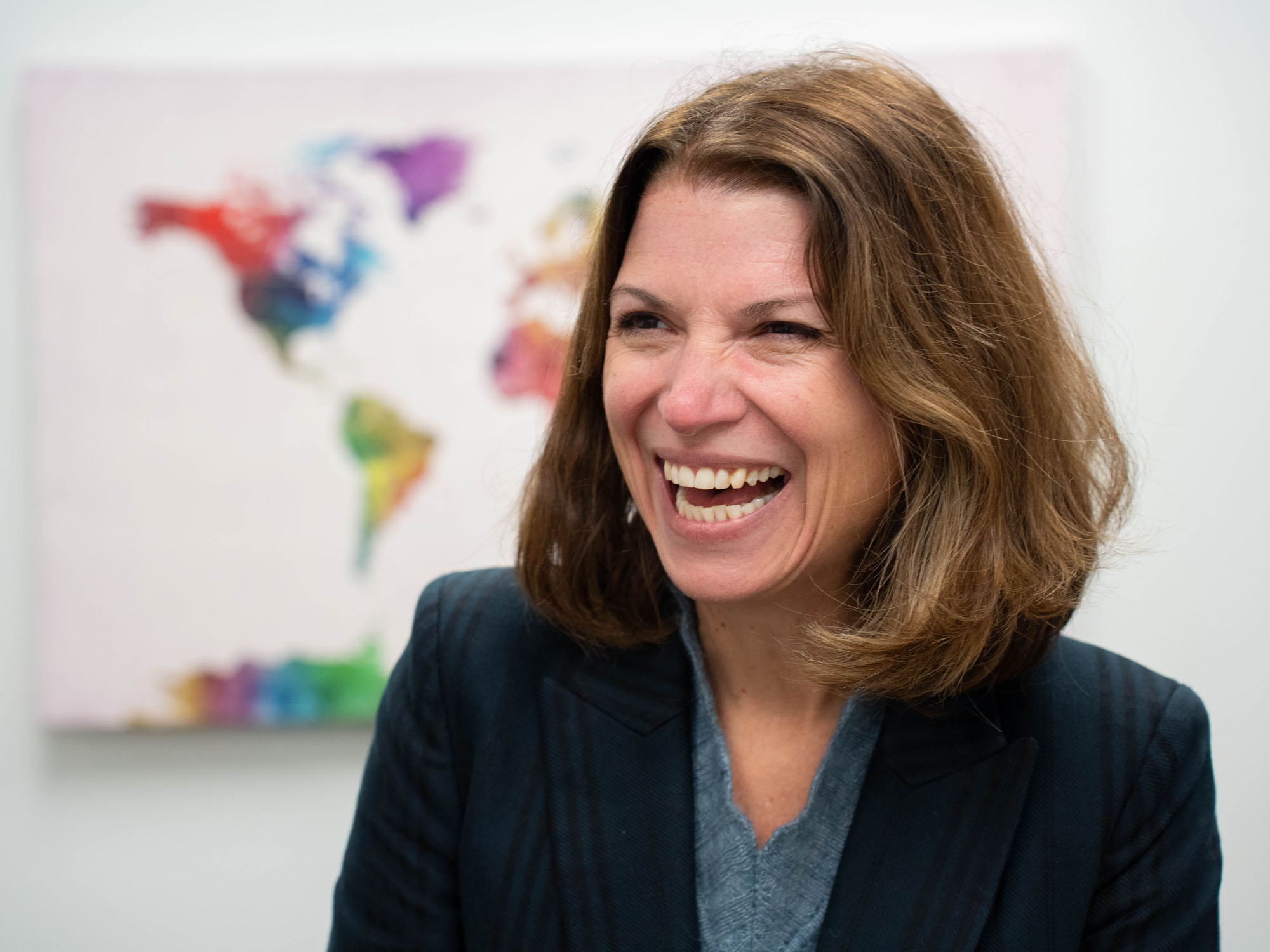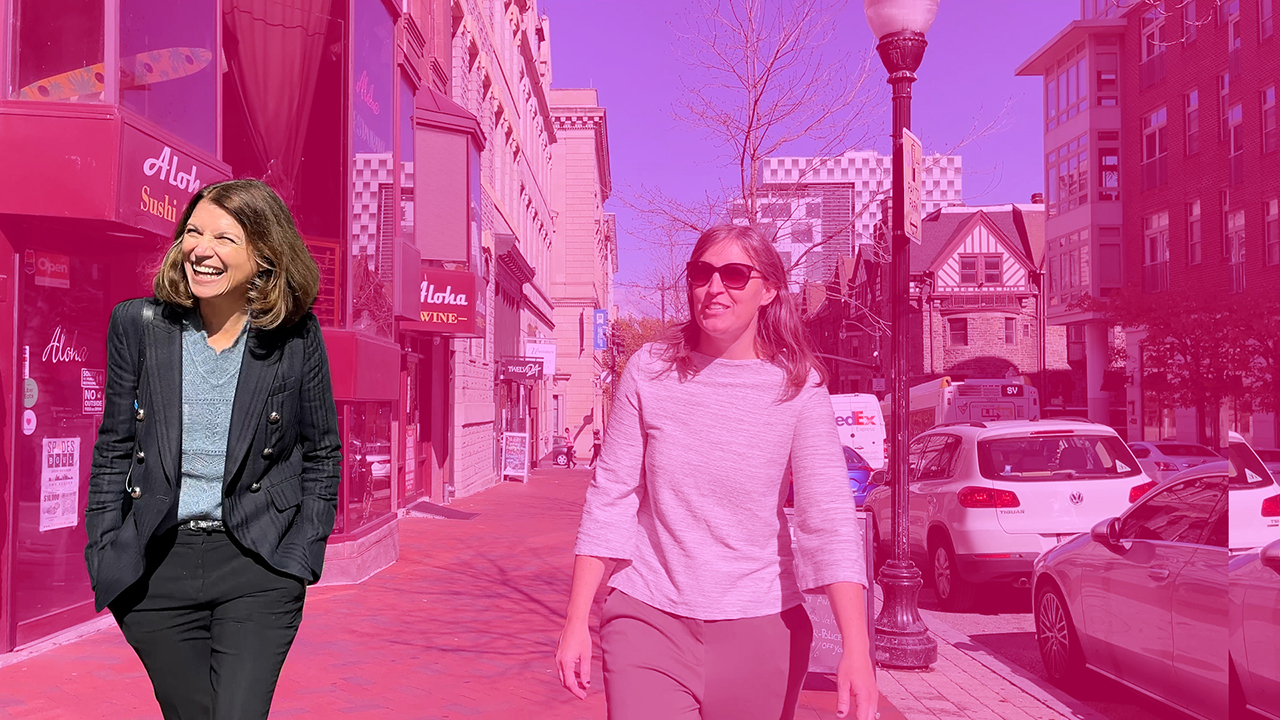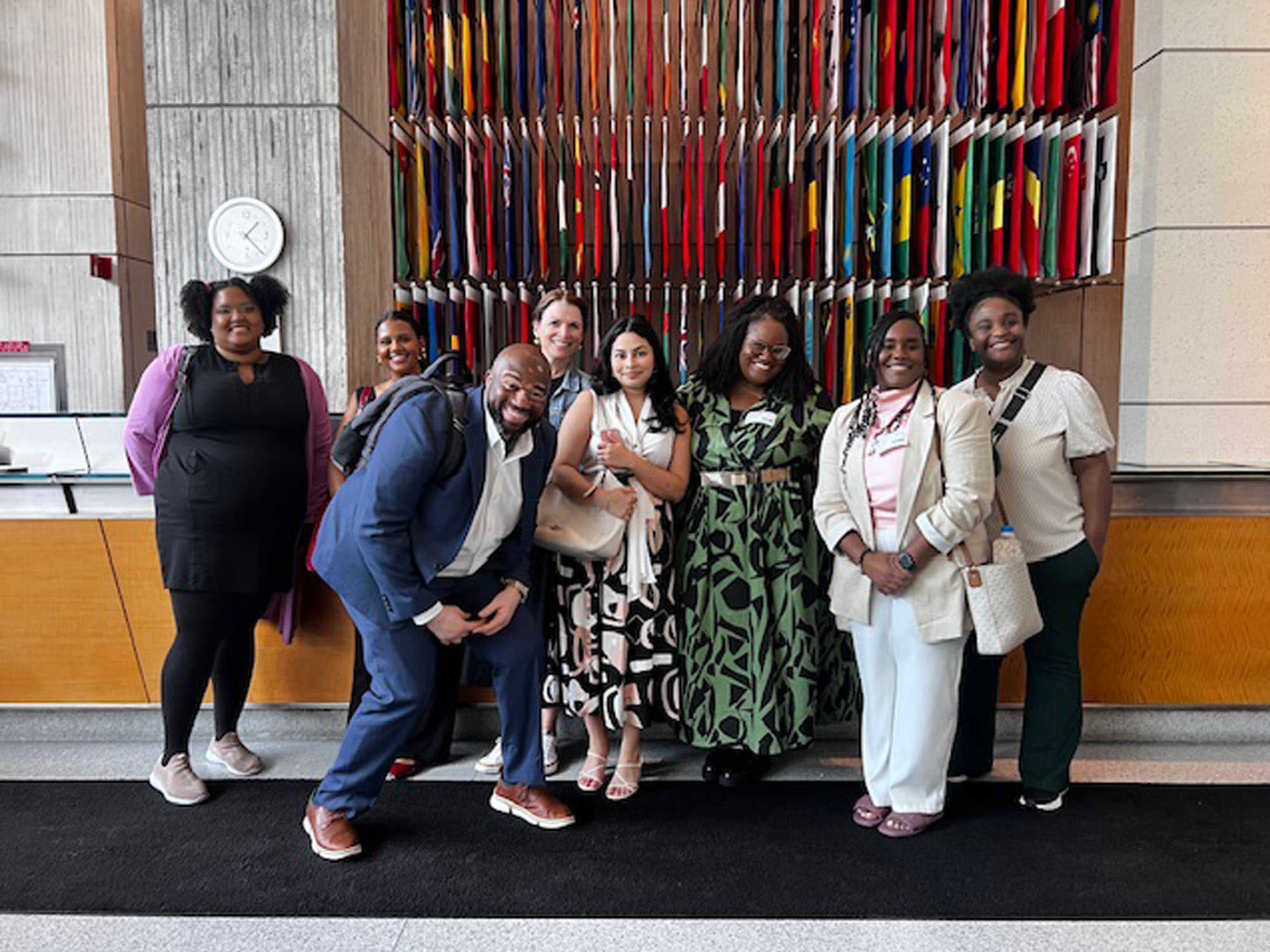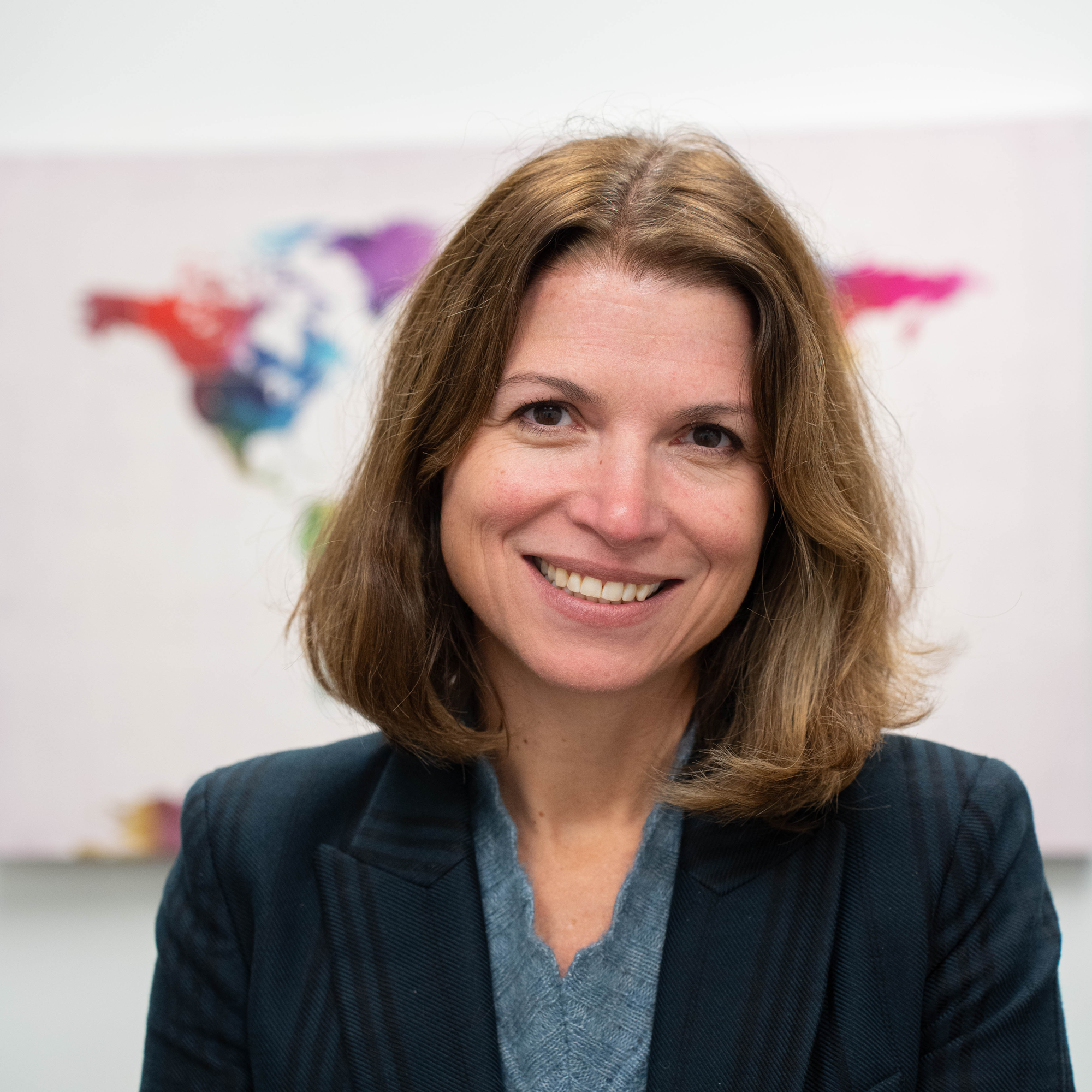Professor brings world-class lessons to Baltimore
There's nothing in my history that said I would be here right now, and I felt like I had people along the way that helped lift me up, that helped me to see who I was, what I wanted to do and how I wanted to do it. ... I felt like I could be that for others.

Dr. Jennica Larrison has a world of lessons awaiting her students as the executive director for the School for Public and International Affairs and an associate professor for The University of Baltimore’s College of Public Affairs.
Her wealth of professional experience, including time as human development specialist with the World Bank in Washington, D.C., helps her prepare students to understand not just real-world politics but their rippling effects on society. Recently, Jennica joined us for a walk to Pillion Tea on Biddle Street to share about what made her shift into higher education and what she wants most for her students.
Q: You’ve won multiple teaching awards, including two in 2022 between the University System of Maryland Excellence in Teaching Award and the University of Baltimore President’s Faculty Award for Excellence in Teaching, Research and Service. What do you feel is the most rewarding part of being an educator?
A: This is easy! I think the most rewarding part of being an educator is being part of our students’ journey. Our students come with a wide range of ideas, concepts and theories about what education is, where it will take them and what they will do. And I see my role as being a huge cheerleader for their success and helping them to figure out how to get where they want to be. So, for me, it's just getting to be part of that journey that's wonderful.
Q: What made you want to be an educator?
A: Actually, when I was young, I wanted to be a professor. And then, life happened, and I went in other directions. Ultimately, I went into international development. Then I got to a point where I had been working with World Bank for a while, finished my Ph.D., and really thought about what I wanted to do, and whether that was to continue doing international development work or to go into academia. And honestly, it was going into international development work until I found the University of Baltimore. I related to our students and felt that I could really make an impact.
I'm a first-generation college student. I grew up in west Texas. There's nothing in my history that said I would be here right now, and I felt like I had people along the way that helped lift me up, that helped me to see who I was, what I wanted to do and how I wanted to do it. I had a professor in graduate school who really believed in me and took me to Indonesia to work on a project, and everything snowballed from there. I felt like I could be that for others, and I could do that as well. When I found the University of Baltimore and began to understand who our student body is, what they're doing, and what their goals are, I felt a real connection to that.


Q: This year, you gave a presentation on “Reimagining Immigration Management in the United States: Foundations, Challenges and Ways Forward” for the American Society for Public Administration. Considering where your experience and research intersect with today’s policies and practices, what do you think is the biggest challenge to immigration management and how do you think it can be overcome?
A: I think, ultimately, it's the disconnect between 21st century migration and 20th century migration management. Our systems have all been built to address a static type of migration: You come from one place, you go to the next, that's it. Or, you have seasonal and circular migration to some degree, but there is a planning that happens on each end that then creates how we manage it. We have specific types of visas, and we have quotas for those visas. Our approach is very much static in terms of what we do and how we do it. At the same time, we have politicians who have very short-term incentives rather than long-term incentives, and are very reactive rather than proactive, based on that incentive structure. What should be happening is that we are looking at what is coming down the pike—what we need in any individual country, what the labor market needs are, and what the demographics look like —and then planning proactively for the needs of our country. We don't do any of that.
Instead, it is very much based on short-term political incentives, rhetoric that's taking place, and then being reactive and responsive. What we should be doing is something that is much more dynamic, recognizing where things will be moving forward and trying to meet those needs now. That requires transparency and communication, as well as a lot of education, in terms of understanding the pros and cons of different levels of immigration. There may be some very short-term downsides to mass migration, but the long-term effects, historically, economically, always demonstrate that it benefits the host community.
I think one place where we have really missed the mark is communication for those who are affected short-term, citizens who may feel like they're being left behind and see resources going toward individuals who are not from this country. That requires us to ensure that we're lifting all boats at the same time and that individuals don't feel like they're being left behind in favor of someone else, and that's just public administration and public policy 101.

Q: Before you came to UBalt, you worked with the World Bank. Then this spring, you
took a group of your global affairs and human security students to visit the Washington D.C.-based Bank. What does it mean to you to get to share this space that was part of your life with the next generation of movers and shakers?
A: The whole reason to do this in the first place is so that students can see that those glass ceilings, that are real and do exist, can be broken, and that we can see ourselves in these environments and be in these environments and do the things that they dream of and want to do. I think the more that we are able to expose students to those ideas, to those possibilities, to those environments, they can feel that they deserve to be there, that they have the right to be there, and ultimately then, to be there.

What Charms Us
We end all our Charles Street Chats with the same question: What do you love most about Baltimore? Here’s Jennica’s answer.
What I love most about Baltimore is the people. It's our students and the eclectic people that find Baltimore as home, that see Baltimore as home, that choose to be here, that fight to be here and care about our city and love the city of Baltimore.

